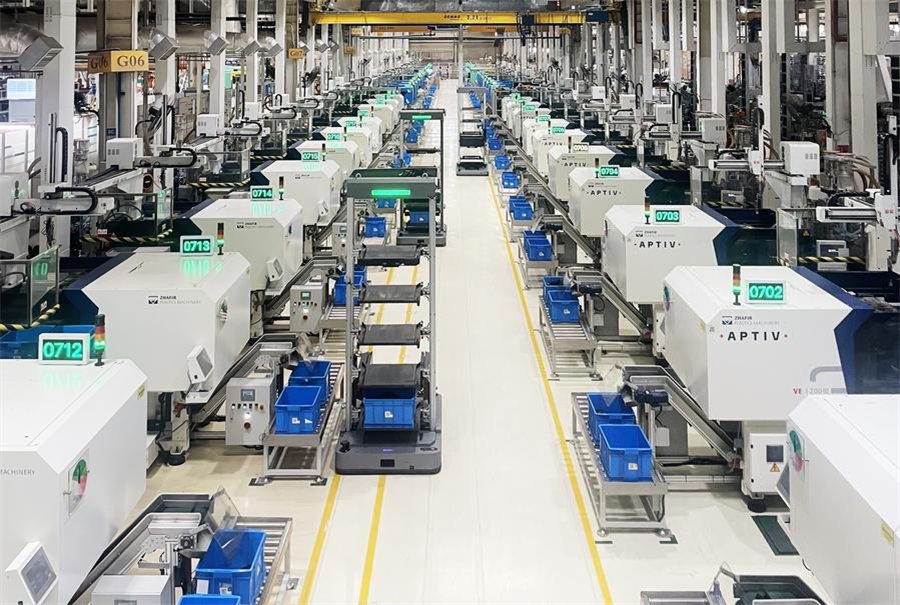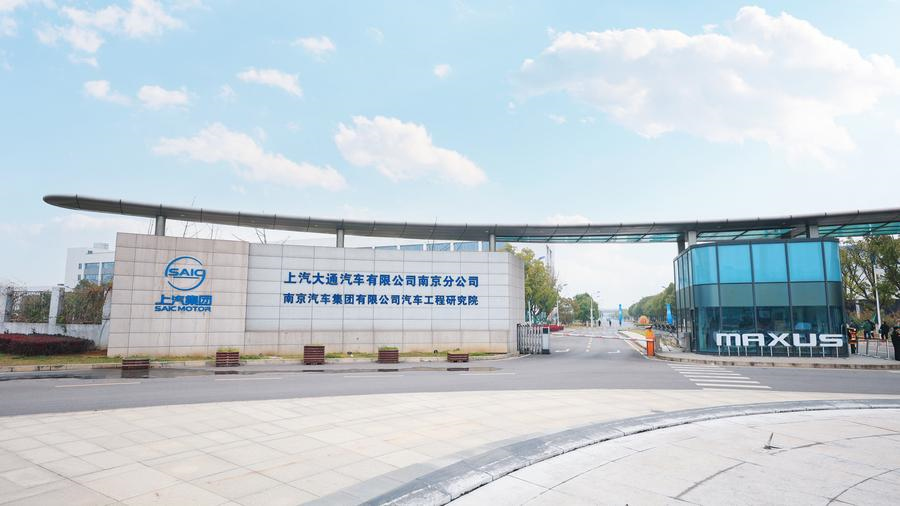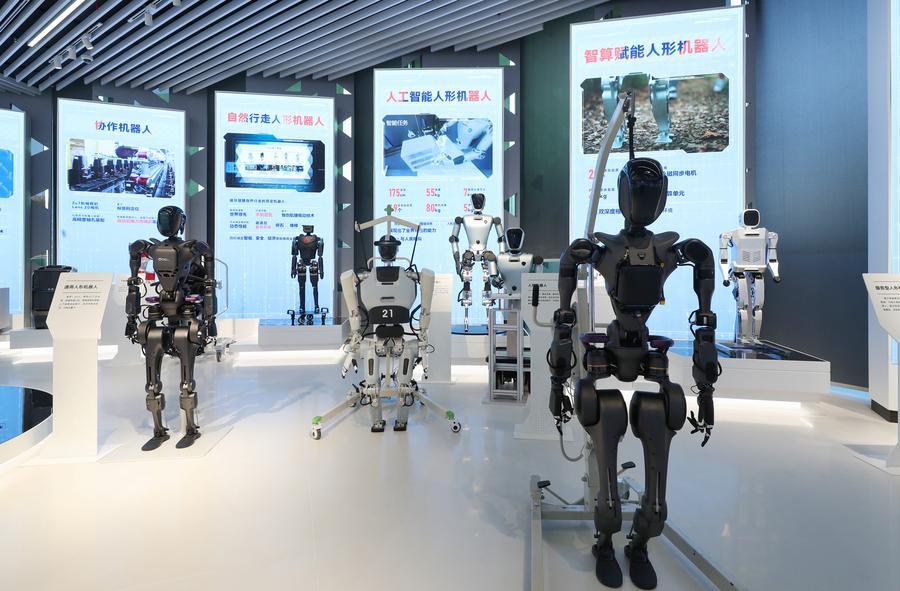New factories driving China's high-quality growth
* In recent years, lighthouse factories, unmanned factories, and smart factories have been mushrooming in China. Increased productivity there offers an insight into how new quality productive forces are driving high-quality growth in the world's second-largest economy.
* By the end of 2023, China had incubated 421 national-level demonstration factories and over 10,000 provincial-level digital workshops and smart factories, official data showed.
* More plans for smart factories are being rolled out across the country. Beijing plans to further add 100 intelligent factories and digital workshops by 2026. Shanghai plans to build 70 municipal-level intelligent factories this year.
SHANGHAI -- Nearly two years after the first BAO Robot took up the post at Baosteel in Shanghai, the country's largest steel maker has brought in many more such smart robots amid its digital transformation.
China Baowu Steel Group Corporation planned to introduce over 10,000 BAO Robots by 2026. Unlike their predecessors, the new robots are powered by smart cloud platforms.
In recent years, lighthouse factories, unmanned factories, and smart factories have been mushrooming in China. Increased productivity there offers an insight into how new quality productive forces are driving high-quality growth in the world's second-largest economy.
NEW FACTORIES, NEW PRODUCTIVITY
Inside a massive factory of Aptiv Electrical Centers (Shanghai) Co., Ltd., rows of robots and CNC machine tools, and automated guided vehicles are busy working. It's rare to see human workers.

This undated photo shows a plant of Aptiv Electrical Centers (Shanghai) Co., Ltd. in Shanghai, east China. [Xinhua]
A smart system precisely arranges all production processes at the factory of Aptiv, a leading global automotive connector supplier.
A smart factory is not simply automation replacing human labor, but a full-process digital recreation, from research and development and production to logistics and after-sales services, said Yang Xiaoming, president of Aptiv China and Asia Pacific.
Yang said the smart factory has driven down the operating costs by 30 percent, while the company's annual sales have grown by double digits over the past three years.
In traditional car manufacturing, buyers often need to choose between standard models. But SAIC MAXUS' smart factory in Nanjing offers personalized customization services, winning the title of Lighthouse Factory awarded by the Davos World Economic Forum.
Customers can choose from thousands of configurations and customize their desired models in as short as three minutes without additional costs. After placing an order, they can track the production progress in real time.
"Our Nanjing factory has achieved smart logistics and manufacturing, and even our ties with hundreds of suppliers are digitally connected," said Hao Jingxian, general manager of SAIC MAXUS. "We are also a transparent factory, with products displayed to users through different stages."

This undated photo shows an exterior view of SAIC MAXUS' smart factory in Nanjing, east China's Jiangsu Province. [Xinhua]
These are epitomes of how intelligent manufacturing is transforming factories. By the end of 2023, China had incubated 421 national-level demonstration factories and over 10,000 provincial-level digital workshops and smart factories, official data showed.
More plans for smart factories are being rolled out across the country. Beijing plans to further add 100 intelligent factories and digital workshops by 2026. Shanghai plans to build 70 municipal-level intelligent factories this year.
Authorities will offer policy support to make over 70 percent of new smart factories demonstration and benchmark ones, said Zhang Ying, head of the Shanghai Municipal Commission of Economy and Informatization.
At existing smart factories, the production efficiency has increased by 50 percent on average, while the operating costs have decreased by 30 percent, and the energy consumption per unit of added value has decreased by 13.8 percent, the official said.
NEW FACTORS, NEW MOMENTUM
From visible robots to invisible data, smart factories are gathering new production factors, injecting new momentum into intelligent manufacturing.
As China's first city to include robot density in the statistics, Shanghai has seen its density reach 426 robots per 10,000 people at major enterprises of key industries. In the Shanghai STEP Robotics Super Factory, the density has reached 1,080 robots per 10,000 people.
The sci-fi-style scene of robots producing robots has become a routine there. Smart robots assemble parts from different suppliers and a robot is produced every 12 minutes.

This photo taken on Nov. 29, 2023 shows robots displayed at an exhibition on sci-tech innovations in east China's Shanghai. [Xinhua/Fang Zhe]
"China has the world's most diverse application scenarios. We can help better build the unique resilience and competitiveness of Chinese manufacturing," said Zhang Zhenkui, special assistant to the chairman of Shanghai STEP Electric Corporation.
Apart from the visible robot employees, the invisible data also unleashes growth momentum.
An industrial internet system of Zhijing Technology is applied in more than 9,000 textile enterprises across the country. It has the operation information of over 700,000 textile equipment.
"Dyeing formulas used to rely mainly on the personal experience of veteran workers and the records in the books, which was time-consuming, strenuous and error-prone," said Zou Yuanjiao, head of the brand department of Zhijing Technology. "Nowadays, our digital solutions can greatly shorten the sample dyeing period."
Rapidly embracing the intelligence wave, China's manufacturing has begun to empower the global supply chain.
"The Chinese factory is our most automated and intelligent factory in the world," said Yang of Aptiv China. "China's auto industry has led the electrification and intelligent transformation, and we must take the initiative to adapt to the 'China speed' of intelligent mobility and the requirements of Chinese customers for rapid iteration of new technologies."
Reporting by Wang Yongqian, Yao Yujie, Zhou Rui, Gong Wen, Yang Kai, Li Baojie; video reporters: Yao Yujie, Sun Qing, Gong Wen, Cen Zhilian; video editors: Hong Ling, Luo Hui, Wang Houyuan, Zhang Qiru, Wang Han
























